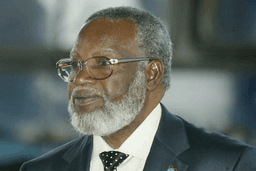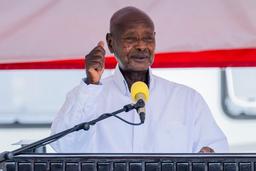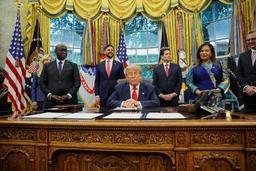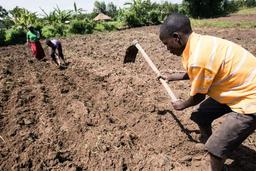Malawi
Malawi, a landlocked country in southeastern Africa, is defined by its topography of highlands split by the Great Rift Valley and enormous Lake Malawi. The lake’s southern end falls within Lake Malawi National Park – sheltering diverse wildlife from colorful fish to baboons – and its clear waters are popular for diving and boating. Peninsular Cape Maclear is known for its beach resorts.

23.3 million

Southern East Africa

118,480 km²

GMT+2

English

Malawian Kwacha

Christianity and Islam

President Lazarus Chakwera
Brief
Malawi, officially known as the Republic of Malawi, is a landlocked country in southeastern Africa, bordered by Zambia, Tanzania, and Mozambique. Known as "the warm heart of Africa," it is characterized by its scenic landscapes, including Lake Malawi, the third-largest lake in Africa, which lies within the Great Rift Valley. The country spans 118,484 square kilometers and stretches about 900 kilometers from north to south. Historically, Malawi was inhabited by the Maravi people and became part of the British Central African Protectorate, later known as Nyasaland. Scottish missionary David Livingstone's arrival at Lake Malawi in 1859 marked a pivotal moment in its colonial history. Malawi gained independence from Britain on July 6, 1964, and became a multiparty democracy in 1993 after decades of one-party rule.
Malawi's government is composed of three branches: the executive, led by the President who serves as both Head of State and Government; the legislative, represented by a 193-member Parliament; and the judiciary, an independent body responsible for upholding the rule of law. The country's economy is primarily agricultural, with the majority of the population living in rural areas. Despite being one of the least developed countries globally, Malawi plays a strategic role in regional trade due to its central location. It benefits from trade agreements that grant it duty-free access to various international markets and continues to receive foreign aid and support in efforts to boost its development and economic growth.
National Anthem
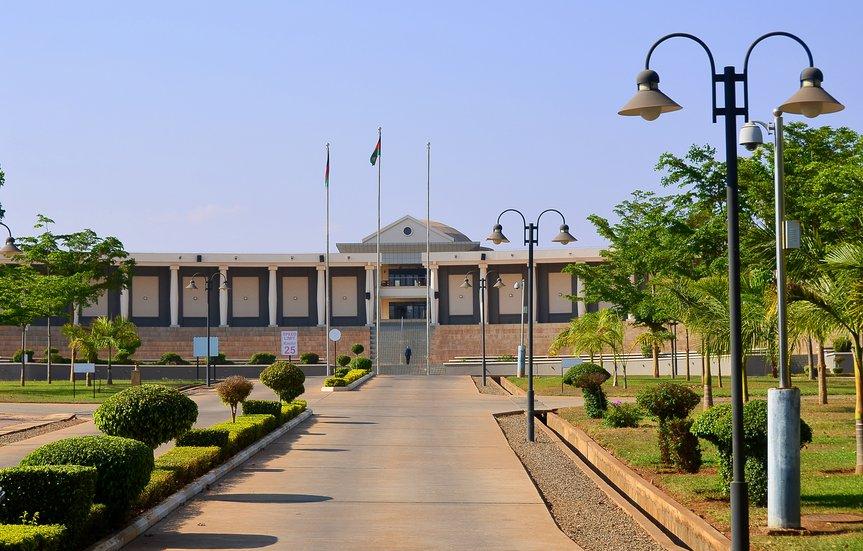



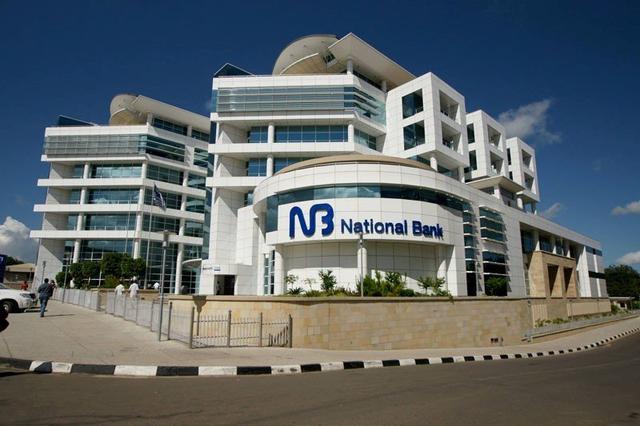
Cultural Life
Cultural Milieu
Malawi's cultural life is a vibrant tapestry woven from the traditions of its more than 12 diverse ethnic groups, including the Chewa, Yao, Tumbuka, and Ngoni. Central to Malawian society is the concept of ubuntu, emphasizing community, mutual support, and shared humanity. Traditional dances like the Chewa’s Gule Wamkulu, the healing Vimbuza, and the harvest-celebrating Tchopa play a vital role in cultural expression, often featuring elaborate masks—especially in Gule Wamkulu ceremonies. Arts and crafts, including mask-making, are deeply embedded in rituals and storytelling. While Chichewa is the national language, English is also widely used. Malawi’s religious landscape is predominantly Christian, but traditional beliefs, Islam, and other faiths coexist. Known for their hospitality, Malawians warmly welcome visitors, reflecting the deep-rooted cultural value of respect and communal care.
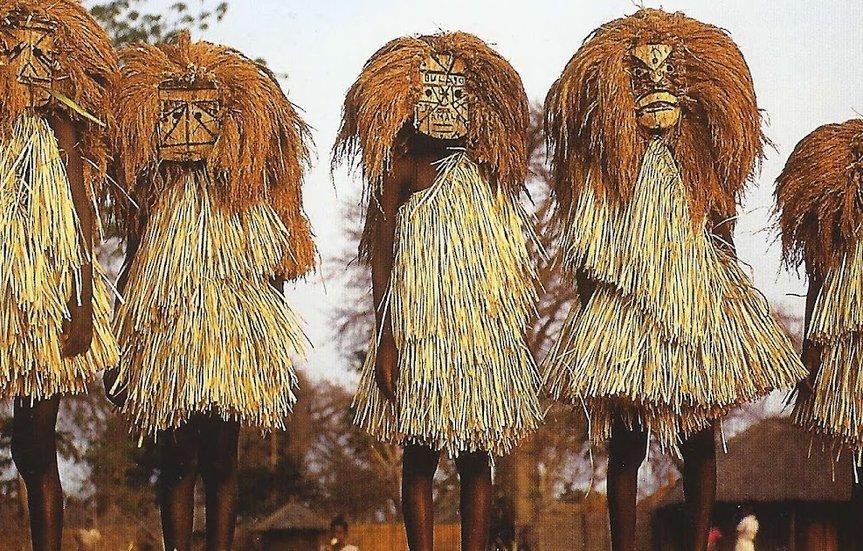



Daily life and Social Customs
Daily life in Malawi is deeply connected to its rich cultural heritage, with a strong emphasis on community, family, and traditional values. In rural areas, where most Malawians reside, agriculture plays a central role in daily routines, often carried out through communal effort. The philosophy of umunthu or ubuntu—"I am because we are"—guides social interactions, fostering cooperation and mutual responsibility. Even in urban areas, where life moves at a faster pace, traditional values continue to influence behavior and relationships. Family structures are close-knit, with extended families often living nearby, and elders holding a respected position in decision-making. Meals typically consist of nsima, a staple made from cornmeal, eaten twice daily along with fruits and vegetables.
Social customs in Malawi are vibrant and diverse, with each ethnic group maintaining unique traditions, particularly in music, dance, and art. Music and dance are integral to celebrations and rituals, with the Chewa people's Gule Wamkulu being one of the most notable performances, using elaborate masks and costumes to represent ancestral spirits. Arts and crafts, such as batik and wood carving, are highly valued and often reflect scenes of village life and the natural world. Hospitality is a hallmark of Malawian culture, with visitors warmly welcomed into homes and included in cultural activities. Despite the country's ethnic diversity, there is a strong sense of unity and mutual respect among communities. Oral tradition also plays a significant role, as storytelling continues to be a cherished way of passing down history, values, and legends from one generation to the next.
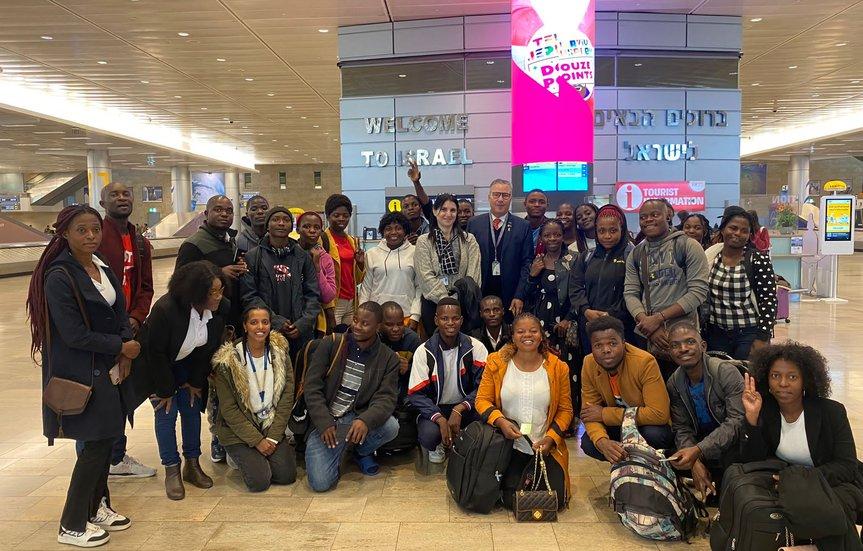




Cuisine
Malawi's cuisine is characterized by its reliance on staples like nsima, a thick porridge made from corn or maize flour, and the availability of fresh fish from Lake Malawi. Beyond these core elements, the cuisine features a variety of dishes, including stews with meat or vegetables, groundnut-based sauces, and fresh salads.
Key aspects of Malawian cuisine:
- Nsima: The most important food in Malawi, often eaten with a variety of side dishes.
- Fish: A significant part of the diet, especially from Lake Malawi, with popular choices like chambo (similar to bream), usipa (like sardines), mpasa (similar to salmon), and kampango.
- Vegetables and Legumes: Often served with nsima, including pumpkin leaves cooked in groundnut sauce, and various other local vegetables.
- Other Staples: Corn, sugar, coffee, potatoes, and sorghum are also important components of the Malawian diet and economy.
- Unique Dishes: Kondowole, a sticky meal, and Thobwa, a fermented drink, are also part of the culinary landscape.
- Nutrition: The Malawian diet is generally rich in carbohydrates, fats, vitamins, and minerals due to the abundance of vegetables and fruits. However, meat consumption can be limited depending on family wealth.





Music
Malawian music is a vibrant blend of traditional rhythms and modern genres, reflecting the country’s rich cultural heritage and its history of migration and cultural exchange. Rooted in oral tradition, music has long accompanied daily life events like planting, weddings, and storytelling, with Nthano—a unique a cappella storytelling form—playing a key role. Traditional instruments such as the ulimba (xylophone) and bangwe (zither) showcase Malawi’s distinctive sound. Over time, returning migrant workers introduced new instruments and styles, influencing the rise of reggae, gospel, R&B, and hip-hop, often fused with local elements.
Today, artists like Anthony Makondetsa, Lucius Banda, the Black Missionaries, Patience Namadingo, Suffix, and Tay Grin are shaping Malawi’s diverse music scene. The Lake of Stars Festival has boosted international recognition, celebrating both local and global talent. Despite challenges like limited artistic freedom, piracy, and a lack of family-friendly venues, Malawian music continues to grow and evolve, driven by creativity, resilience, and a strong cultural foundation.
The Arts
Malawi's arts scene is a vibrant fusion of traditional and contemporary forms, reflecting the country's rich cultural heritage and ethnic diversity. Traditional arts such as basket weaving, pottery, and wood carving are widely practiced and serve both practical and cultural functions within communities. Music and dance remain central to Malawian identity, with each ethnic group contributing unique styles and rituals that preserve and celebrate their traditions.
Contemporary art forms like painting, sculpture, and modern music are also thriving, often addressing social issues and drawing inspiration from Malawi’s natural and cultural landscape. Events like the Lake of Stars Festival highlight the creative energy of the Malawian arts scene, promoting tourism and economic growth. Government initiatives, including the Department of Arts and Crafts and the Malawi National Arts and Heritage Promotion Fund, aim to support and promote artistic development, ensuring the arts continue to play a key role in cultural preservation, expression, and national progress.
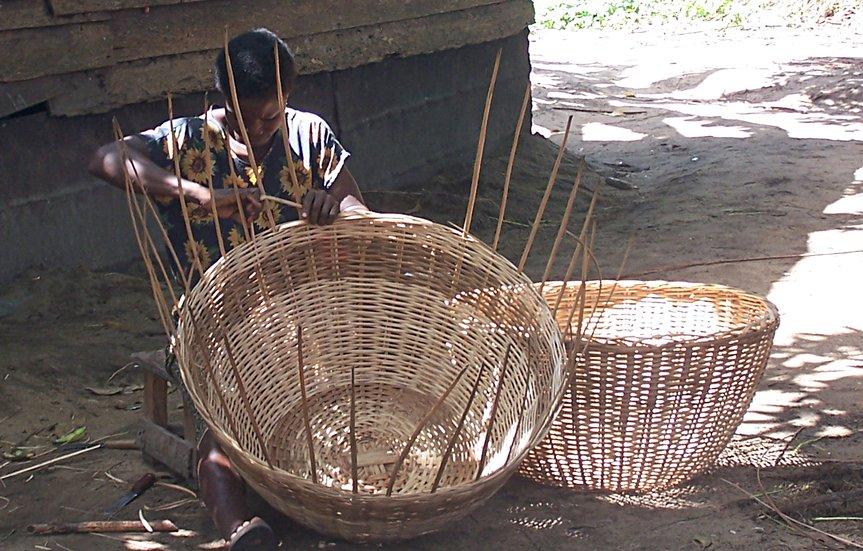




People
Ethnic Groups
Malawi is a multicultural nation home to numerous ethnic groups, each contributing uniquely to its rich cultural fabric.
The Chewa, the largest group, primarily live in the central region and are known for their matrilineal society and the traditional Gule Wamkulu dance.
The Yao, found in the south and east, are recognized for their historical involvement in trade and their strong Islamic influence.
The Lomwe, also concentrated in the south, share cultural ties with the Yao, while the Tumbuka, dominant in the north, are celebrated for their music and vibrant cultural practices.
The Ngoni, originally from South Africa, are known for their warrior heritage and successful cultural integration with other groups.
Other significant ethnic communities include the Sena, located mainly in the southern region with links to the Zambezi River, and the Nkhonde and Tonga, who inhabit areas near Lake Malawi in the north. The Mang’anja, closely related to the Chewa, are found in the central region, contributing to the cultural depth of that area. Additionally, smaller groups like the Lambya and Sukwa add to Malawi’s diverse cultural landscape, each preserving distinct languages, customs, and traditions that reflect the country’s rich historical and social complexity.
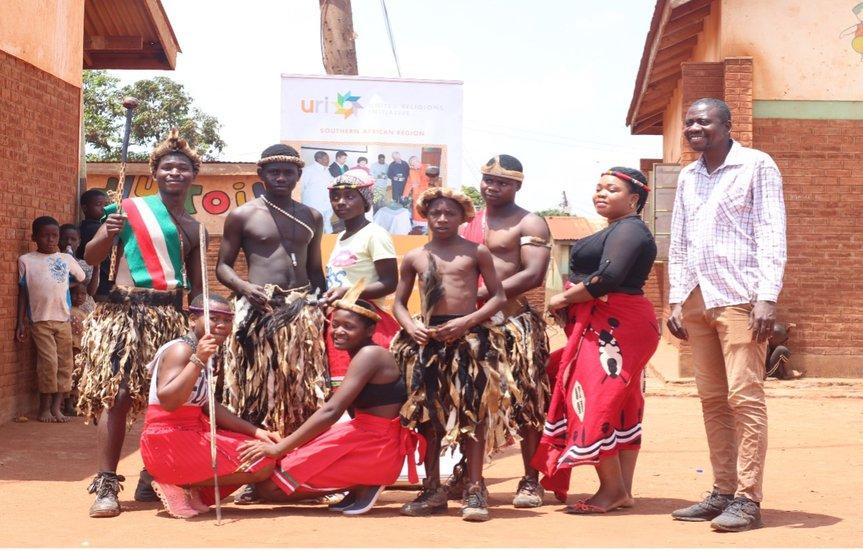



Religions
Malawi has a diverse religious landscape, with Christianity being the dominant faith, practiced by about 87% of the population. Major Christian denominations include the Roman Catholic Church and the Church of Central Africa Presbyterian. Islam is the second largest religion, followed by around 11% of Malawians, mainly in the southern regions.
Despite religious differences, Malawi is known for its strong tradition of religious tolerance and peaceful coexistence. Christians and Muslims often work together in communities and institutions, and interfaith cooperation is common. The country’s constitution protects religious freedom, and this right is generally respected by the government. Religious diversity is also reflected in the media, with many radio and television stations affiliated with Christian or Muslim groups, underscoring the influence of faith in Malawian society.
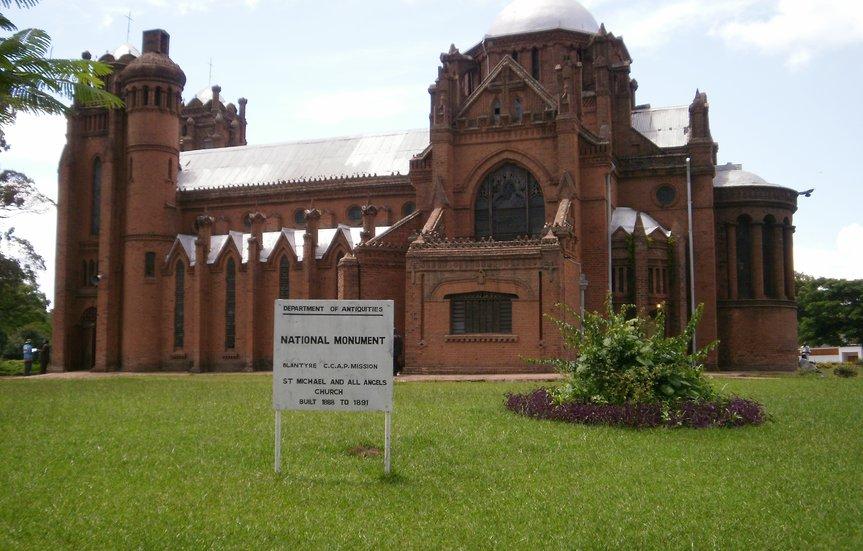




Settlement Patterns
Malawi’s settlement patterns are shaped by a blend of traditional rural structures and expanding urban areas, with a majority of the population still residing in villages and small communities. Traditional land tenure systems—either matrilineal or patrilineal—play a central role in determining inheritance and residence, with land often passed down through the female or male line depending on the region. These customs create diverse patterns of settlement, as couples may live in the husband's or wife's village, depending on local traditions. In rural areas, informal land allocation by local chiefs is common, which can lead to irregular development and fragmented land use.
Urbanization in Malawi is steadily increasing, with growing urban sprawl and the development of peri-urban zones. To manage this growth, the government is working on a Secondary Cities Plan and developing eight new secondary cities, supported by the Malawi National Planning Commission and ORG Permanent Modernity. Urban areas often feature a mix of formal and informal settlements, facing challenges such as inadequate infrastructure, uncoordinated land use, and governance issues. Additionally, the influx of Mozambican refugees has had a lasting impact on settlement patterns and resource distribution, highlighting the need for better spatial planning. Key legislation, such as the National Land Policy and the Town & Country Planning Act, guides development, but implementation remains a challenge, particularly in extending municipal boundaries and ensuring fair compensation to landowners.
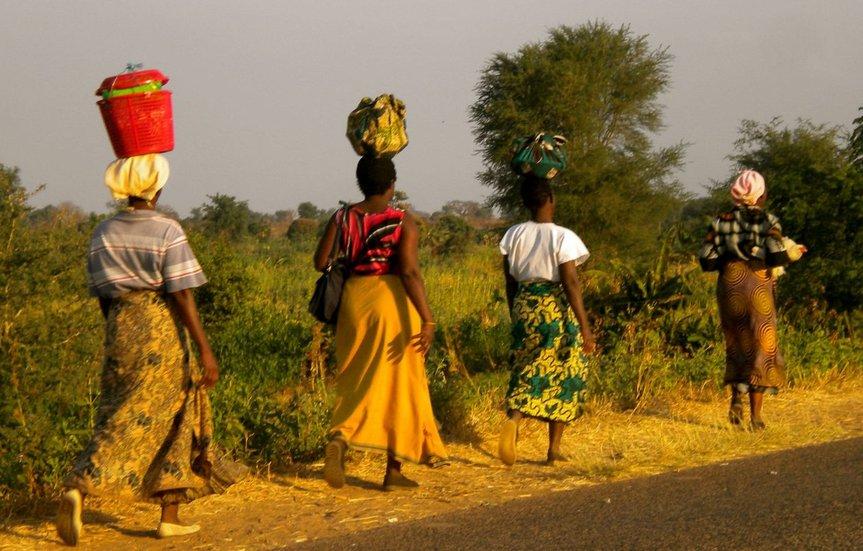




Demographic Trends
Malawi’s demographic trends are marked by rapid population growth driven by high fertility rates and a predominantly young population, with a large share under the age of 15. The country is among the most densely populated in Africa, with most people living in rural areas and relying on agriculture for their livelihood. Despite ongoing urbanization, the majority of Malawians continue to live in villages and small towns, where poverty remains widespread. A significant portion of the population lives below the poverty line, which, along with limited access to education and healthcare, influences key demographic factors like fertility and mortality rates.
Several factors contribute to these trends, including low contraceptive use and high fertility rates, which fuel population growth. Although mortality rates, particularly among children, are gradually declining, they still affect overall population dynamics. Poverty and underdevelopment play a central role in shaping Malawi’s demographic profile, as limited resources restrict improvements in health and education. Meanwhile, increasing urbanization is beginning to impact demographic patterns, though rural areas continue to dominate the country’s social and economic landscape.
Touristic cities
Lilongwe
Lilongwe, the capital of Malawi, blends urban life with natural beauty and cultural heritage. Key attractions include the Lilongwe Wildlife Centre, a sanctuary for rescued animals, and the Parliament Building and Kamuzu Mausoleum, which offer insight into Malawi’s political history. Nature enthusiasts can enjoy the peaceful Nature Sanctuary or venture to the nearby Dzalanyama Forest Reserve for hiking and birdwatching. For a taste of local life, the bustling Old Town Market showcases traditional crafts, produce, and street food, making Lilongwe a welcoming gateway to the country's rich landscapes and culture.

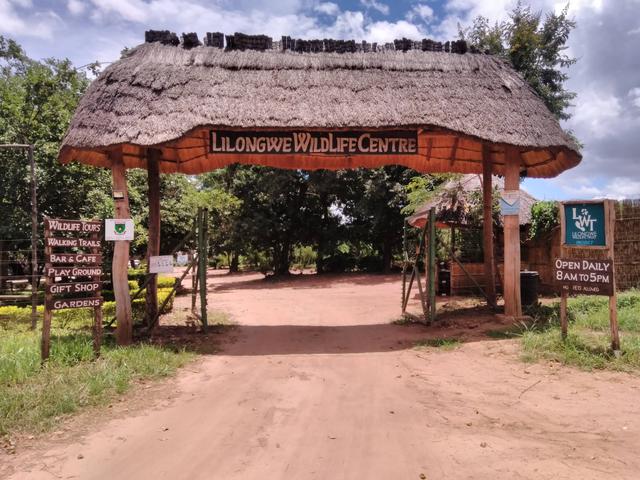
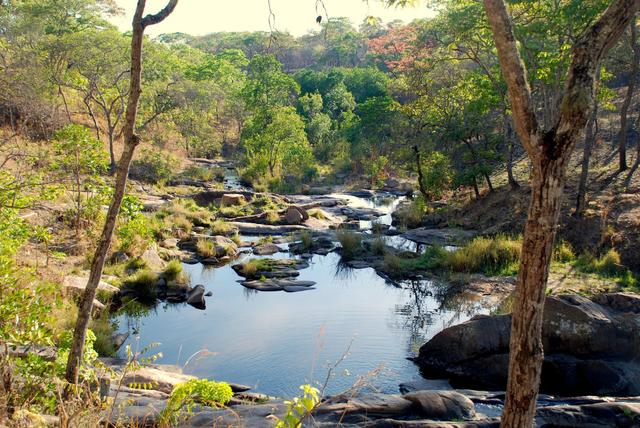


Blantyre
Blantyre, the commercial heart of southern Malawi, offers a blend of history, culture, and natural beauty. Notable attractions include the St. Michael and All Angels Church, a 19th-century architectural marvel, and the Mandala House, the oldest European building in Malawi, now hosting a cultural center and art gallery. Hikers can explore Michiru Mountain and Ndirande Mountain for panoramic views, while wildlife enthusiasts can visit the nearby Majete Wildlife Reserve to spot the Big Five. The Museum of Malawi adds depth with exhibits on the nation's rich history and heritage, making Blantyre a rewarding destination for travelers.
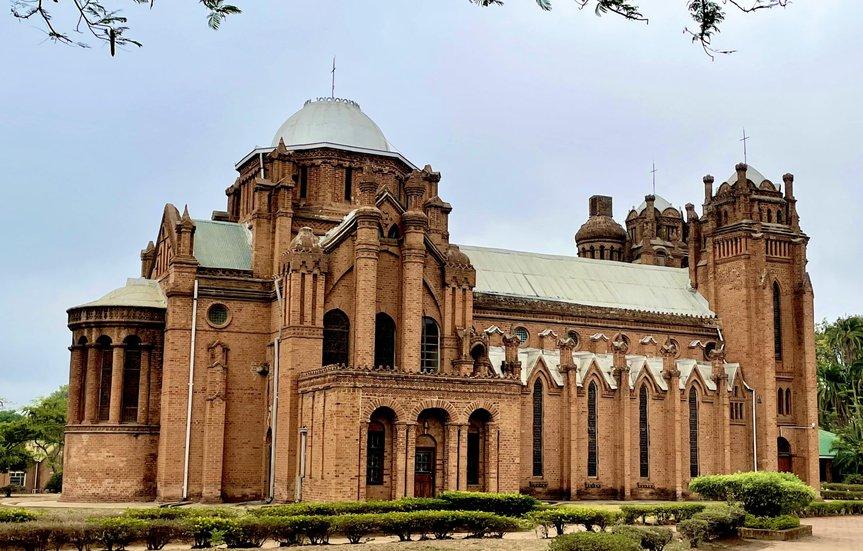




Accommodation
Malawi offers a range of accommodation options to suit different budgets and preferences, from basic guesthouses and lodges to luxury hotels and resorts. In urban areas like Lilongwe and Blantyre, visitors can find modern hotels with amenities such as Wi-Fi, restaurants, and conference facilities. Around popular tourist destinations—like Lake Malawi and national parks—there are numerous lodges, safari camps, and beach resorts that provide comfortable stays close to nature. Many accommodations emphasize warm Malawian hospitality, often incorporating local culture and cuisine to enhance the experience. Whether traveling on a budget or seeking luxury, Malawi’s accommodation options provide welcoming and authentic stays.
Guesthouses and Lodges
Thumbi View Lodge: Located in Cape Maclear, this lodge is praised for its cleanliness and proximity to the Cape Maclear Scuba Diving Center.
Huntingdon House: This establishment is lauded for its comfortable rooms, authentic restoration, and friendly staff, and is described as an oasis.
St. Peter's Guesthouse: Situated in Lilongwe, it's considered a great value option with helpful staff and a good breakfast.
Kumbali Lake Retreat: This eco-friendly lodge, located on Lake Malawi, is known for its good food, friendly staff, and comfortable accommodations.
Sunbird Lilongwe: A 3.5-star lodging in Lilongwe, it features an outdoor pool, fitness center, restaurant, and free breakfast.
Ntchisi Forest Lodge: Located in Bwanje, this lodge offers a unique experience with its Forest Cabin (more luxurious) and other clean and lovely rooms.
Quest at Cape Maclear: This lodge is mentioned among the best lodges in Malawi.
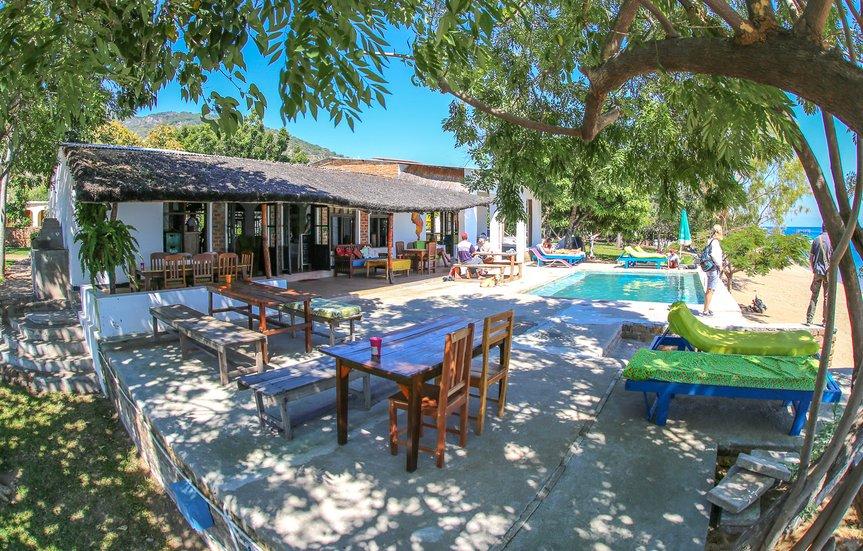




Hotels and Resorts
Kaya Mawa (Likoma Island) – A boutique luxury lodge, frequently featured in international travel magazines. Offers beachfront chalets, water sports, and spa services.
Mvuu Lodge (Liwonde National Park) – Known for its riverside setting and close proximity to elephants, hippos, and birdlife.
Mabuya Camp (Lilongwe) – A budget-friendly backpacker lodge popular with overlanders and independent travelers.
Tongole Wilderness Lodge (Nkhotakota Reserve) – An off-grid luxury eco-lodge committed to conservation and local development.
Latitude 13° – Lilongwe: An upscale Boutique Hotel with Modern design, art-filled interiors, fine dining, and a creative atmosphere.
Pumulani Lodge – Cape Maclear: located near Lake Malawi National Park with luxury Lakeside Resort with elegant villas overlooking the lake, infinity pool, sailing, and snorkeling.
Blue Zebra Island Lodge – Nankoma Island: near Marelli Islands, Lake Malawi with secluded island setting, snorkeling, kayaking, birdwatching.
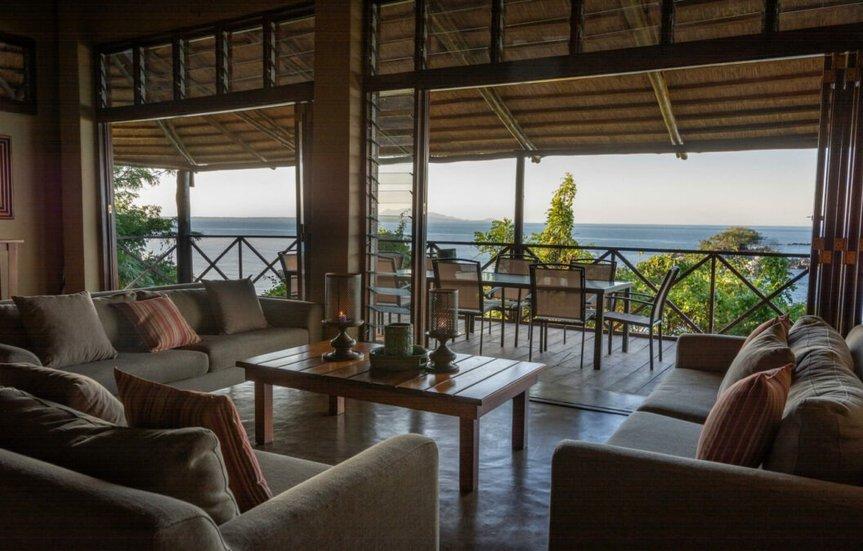
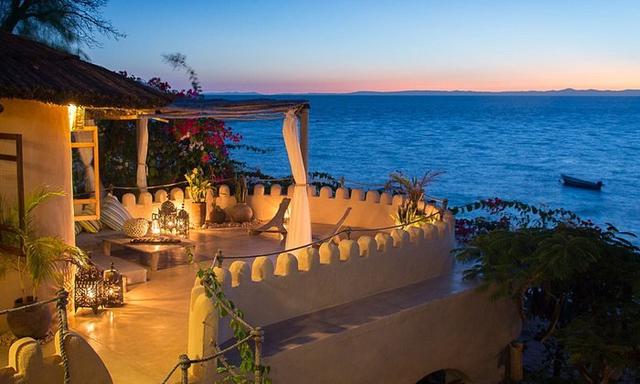
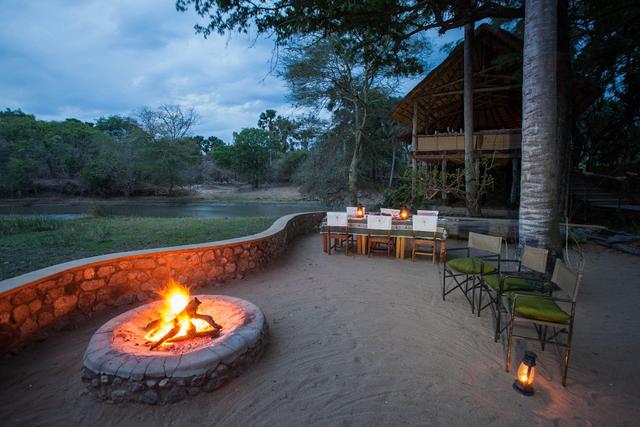
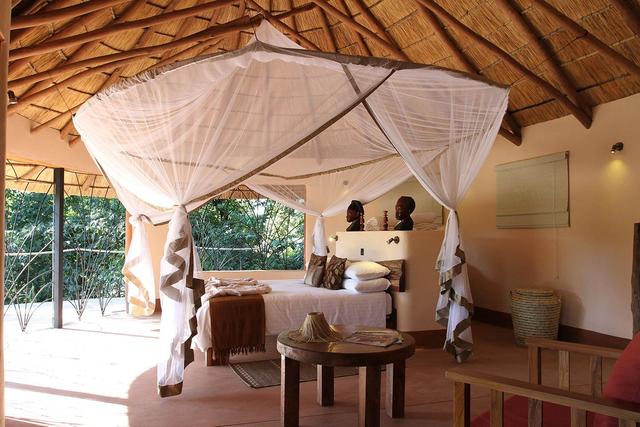

Campings
Chelinda Camp – Nyika National Park
- Type: Mountain Safari Camp
- Location: Nyika Plateau, Northern Malawi
- Highlights: Log cabins and chalets with fireplaces, high-altitude scenery, zebras, and roan antelope.
- Unique Feature: Only highland national park in Malawi; feels like alpine Africa.
- Ideal For: Birdwatchers, hikers, photographers.
Makuzi Beach Camp – Lake Malawi
- Type: Lakeside Camp
- Location: Near Nkhata Bay
- Highlights: Beautiful beach setting, budget-friendly chalets, kayaking, and snorkeling.
- Unique Feature: Quiet and uncrowded, with a laid-back vibe.
- Ideal For: Backpackers, couples, independent travelers.
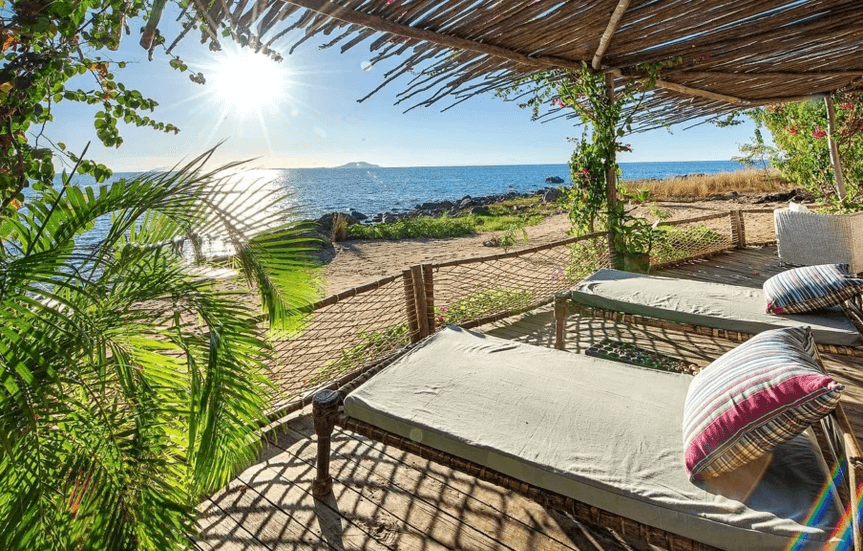
Requirements for a visa
Documents required for the application process
To get a visa for Malawi, you'll typically need to apply online through the Malawi e-Visa portal, providing details like passport information, travel plans, and a photo. You'll also need to pay the visa fee and any convenience fees.
Here's a more detailed breakdown:
Online Application:
- Create an account on the Malawi e-Visa portal.
- Complete the online application form with your personal and travel information.
- Upload required documents, including a passport copy, photo, and proof of accommodation.
- Pay the visa fee online.
Required Documents:
- Passport: A valid passport with at least six months of validity beyond your intended stay.
- Photograph: A passport-style photo, typically taken within the last six months, meeting specific requirements (e.g., white background, neutral expression).
- Proof of Accommodation: A copy of your hotel reservation or other lodging details.
- Proof of Status: If not a citizen, a copy of your resident permit or other relevant immigration status.
- Proof of onward travel: If required, evidence of your departure from Malawi (e.g., flight ticket).
- Visa Fees: Fees vary depending on the type of visa and can be paid online or in cash at the port of entry.
Yellow Fever Vaccination: You may need a yellow fever vaccination if arriving from a risk area.
Entry Rights: A visa does not guarantee entry. The Malawi Department of Immigration reserves the right to interview and potentially deny entry at the port of entry.
Important Consideration
To get a visa for Malawi, you'll typically need to apply online through the Malawi e-Visa portal, providing details like passport information, travel plans, and a photo. You'll also need to pay the visa fee and any convenience fees. Here's a more detailed breakdown:1. Online Application: Create an account on the Malawi e-Visa portal. Complete the online application form with your personal and travel information. Upload required documents, including a passport copy, photo, and proof of accommodation. Pay the visa fee online. Required Documents: Passport: A valid passport with at least six months of validity beyond your intended stay. Photograph: A passport-style photo, typically taken within the last six months, meeting specific requirements (e.g., white background, neutral expression).Proof of Accommodation: A copy of your hotel reservation or other lodging details. Proof of Status: If not a citizen, a copy of your resident permit or other relevant immigration status. Proof of onward travel: If required, evidence of your departure from Malawi (e.g., flight ticket).Visa Fees: Fees vary depending on the type of visa and can be paid online or in cash at the port of entry. Yellow Fever Vaccination: You may need a yellow fever vaccination if arriving from a risk area. Entry Rights: A visa does not guarantee entry. The Malawi Department of Immigration reserves the right to interview and potentially deny entry at the port of entry.
Economy of Malawi
Malawi's economy is heavily reliant on agriculture, with about 80% of the population living in rural areas and depending on it for their livelihoods. Agriculture contributes roughly a third of the national GDP and the majority of export revenues, with tobacco, tea, and sugar being the primary exports. The country faces challenges like policy inconsistency, macroeconomic instability, poor infrastructure, and high population growth, which have hindered its economic progress. Malawi is also a landlocked nation, making it reliant on neighboring countries for transportation routes and trade.
Agriculture
Agriculture remains the cornerstone of Malawi’s economy, employing over 80% of the population and contributing about 30% to the GDP. However, the sector faces persistent challenges, including climate change effects like erratic rainfall, soil degradation, and continued reliance on traditional farming methods. To address these, Malawi is promoting conservation agriculture practices—such as minimal soil disturbance, permanent soil cover, and crop diversification—to improve productivity and sustainability.
Efforts to modernize the sector have also included hosting the 7th Africa-Wide Agricultural Extension Week, which emphasized stronger collaboration between public and private sectors. The launch of the Mlimi Mobile App marks a step toward greater technology adoption, offering farmers real-time advisories and market access. Meanwhile, El Niño-related drought has worsened food insecurity, prompting discussions on alternatives to the Affordable Input Programme (AIP), including farmer clubs and direct cash transfers. These initiatives reflect Malawi’s commitment to aligning with regional goals for food security and sustainable agricultural development.
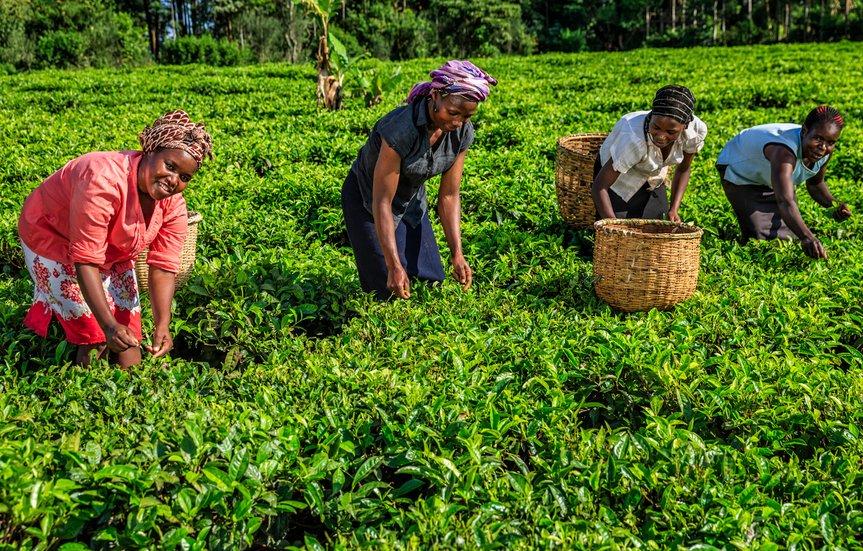
Forestry and Fishing
Malawi’s forestry sector is increasingly focused on sustainable management and climate resilience. The National Forestry Policy and Programme aim to conserve forest resources, reduce deforestation, and improve the delivery of forest goods and services. Key strategies include simplifying regulations for private enterprises, enhancing forest-product pricing, and providing training for stakeholders. Community-based forest management is also being promoted, empowering local communities to manage and benefit from natural resources. Initiatives like the 2023–2024 National Forestry Season highlight the country’s commitment to reforestation and long-term sustainability.
In the fisheries sector, Malawi is implementing the National Aquaculture Development Plan (2025–2030) to strengthen institutional capacity and promote climate-resilient aquaculture technologies. The plan supports the transfer of adaptation technologies, community resilience through small grants, and improved access to climate information. Integrated flood early warning systems are being developed to protect livelihoods, while the Department of Fisheries works closely with district offices and other stakeholders to implement supportive policies and ensure inclusive development in the sector.
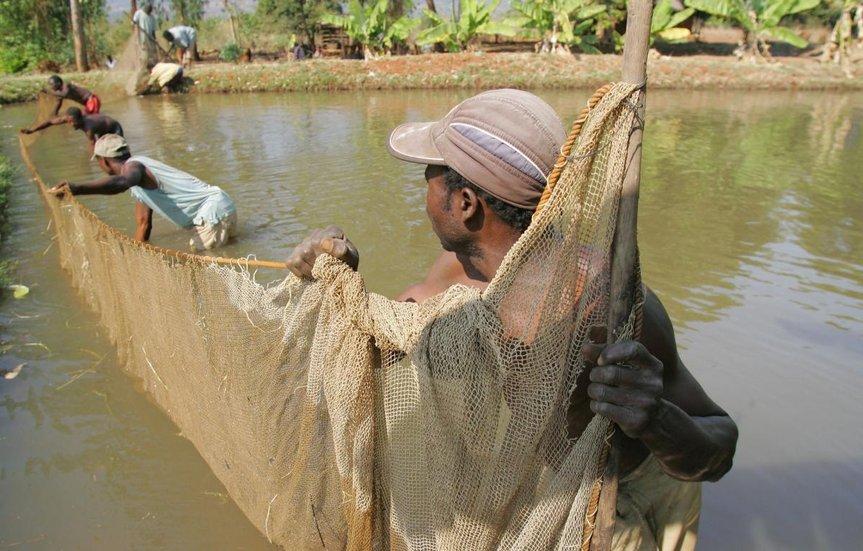
Resources and Power
Malawi's economic recovery in 2025 remains fragile, hindered by the slow implementation of reforms, high inflation, and lingering effects of the COVID-19 pandemic. Around 70% of the population lives below the $2.15 poverty line, with projections suggesting an increase to 71.3%, deepening poverty and food insecurity. Inflation remains elevated due to rising food, housing, and utility costs, while the banking sector, though profitable from government borrowing and high interest rates, shows signs of vulnerability. Energy supply shortages continue to disrupt key sectors, limiting productivity and economic resilience.
Despite these challenges, the government targets a 3.2% GDP growth rate, driven by investments in agriculture, tourism, mining, and energy. Efforts are underway to transition toward a more sustainable energy future through distributed renewable energy (DRE) and technology-driven electrification. Key sectors like agriculture, manufacturing, and transportation remain central to economic growth. However, with public trust eroded by slow progress and economic strain, the upcoming 2025 elections will be a critical test of leadership and the country’s direction in tackling its structural and developmental challenges.

Finance
Malawi’s finance sector is facing significant macroeconomic challenges marked by high inflation, currency depreciation, and external imbalances. The Reserve Bank of Malawi has maintained its policy rate at 26% since early 2024 in an effort to contain inflation, which remains high—projected between 24–34%. This is largely driven by rising food and utility prices, expansionary fiscal policies, and a weakening kwacha. As a net importer, Malawi continues to struggle with foreign exchange shortages, leading to increased reliance on the parallel market and multiple devaluations of the currency.
Public finances are under pressure, with the 2025 budget projecting a fiscal deficit of 8–9% of GDP, driven by increased government spending ahead of elections and weak revenue performance. Public debt has climbed to 86–93% of GDP, placing the country in a state of external debt distress. The IMF Extended Credit Facility, approved in late 2023, saw minimal disbursement and was terminated in mid-2025 after releasing only $35 million. In response, Malawi is working on an aimed at improving revenue mobilization, managing debt, stabilizing foreign reserves, and fostering long-term economic stability and growth.

Manufacturing
Malawi’s manufacturing sector is poised for growth in 2025, contributing significantly to the projected 4.8% economic expansion. This growth is being driven by increased output from large-scale mega-farms and rising activity in related sectors such as construction and accommodation. The government is actively encouraging foreign direct investment, particularly from Commonwealth nations, aligning these efforts with the broader ATM Strategy (Agriculture, Tourism, and Mining) to stimulate industrial development and job creation.
To support the sector, Malawi is implementing pro-business policies, offering investment incentives, and promoting diversification into value-added manufacturing and digital trade, particularly for export markets. However, challenges remain, including persistent foreign exchange shortages and underdeveloped infrastructure, which hinder production capacity and global competitiveness. Addressing these bottlenecks will be crucial to fully unlocking the sector’s potential and achieving long-term industrial transformation.
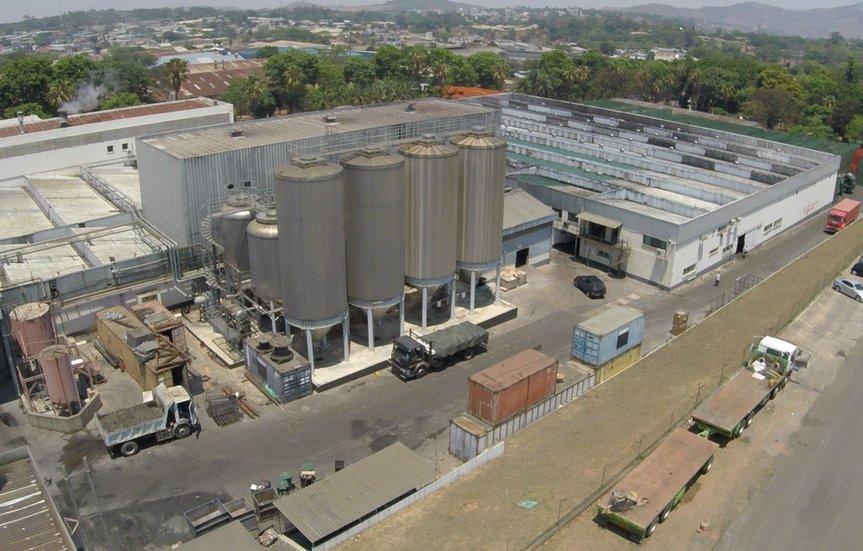
Trade
Malawi’s trade landscape in 2025 remains shaped by its status as a net importer, with a trade balance skewed toward the import of manufactured goods, machinery, and transport equipment. While agriculture continues to dominate exports—particularly tobacco, tea, and sugar—there is increasing recognition of the need to diversify into other areas such as rubber and wood products, beans, corn, and wheat. As a landlocked country, Malawi relies heavily on road and rail networks to access ports in Mozambique and South Africa, which is essential for both import and export logistics.
The country actively participates in regional and global trade agreements, including COMESA and SADC, which facilitate trade integration and market access within Africa. Additionally, Malawi benefits from the African Growth and Opportunity Act (AGOA), allowing duty-free exports to the United States, particularly in agricultural and textile products. Key trade partners include South Africa, the UAE, India, China, and the European Union. Continued efforts to improve infrastructure, trade facilitation, and export diversification will be critical to strengthening Malawi’s trade position and reducing its reliance on imports.
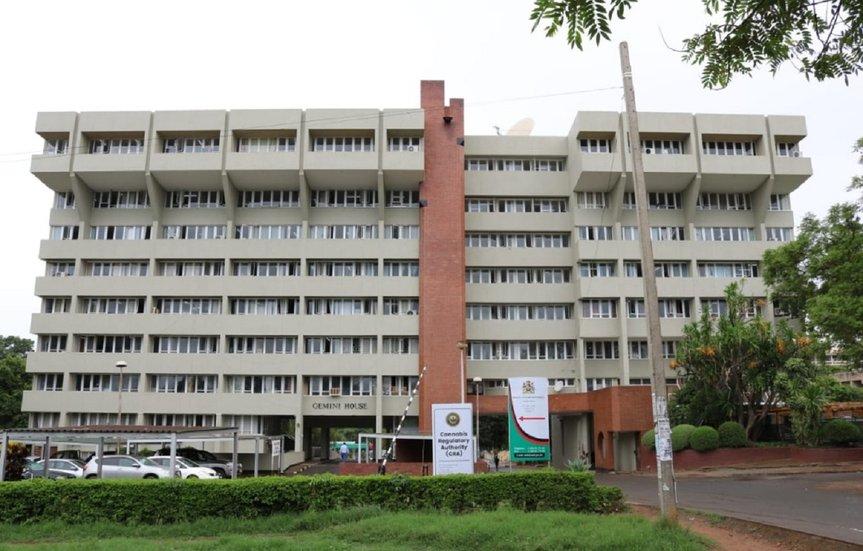
Labor and Taxation
Malawi’s labor laws emphasize fairness, equality, and protection of workers' rights. The Employment Act of 1999 outlines key provisions such as equal pay for equal work, the prohibition of forced labor, and anti-discrimination measures based on gender, age, or other irrelevant factors. The Labor Relations Act supports workers’ rights to freedom of association, collective bargaining, and dispute resolution. Severance pay is legally mandated and calculated based on the length of service, offering financial protection to departing employees.
On the taxation front, Malawi’s system is overseen by the Malawi Revenue Authority (MRA), which manages tax assessment, collection, and enforcement. Value Added Tax (VAT) remains the largest source of tax revenue, followed by other taxes on goods and services. PAYE (Pay As You Earn) is used to collect income tax from employees, while withholding tax is applied to specific payments, including new measures targeting winnings from betting and gambling. Tax laws are regularly updated, including adjustments to the tax-free threshold for casual labor and criteria for withholding tax exemptions, reflecting efforts to modernize and broaden the tax base.

Transportation
Malawi’s transportation system is predominantly road-based, with over 70% of internal freight and 99% of passenger traffic moved by road. Public transport includes buses, minibuses (locally known as "motolas"), and taxis, which are especially common in urban areas. Car hire services are also available, with or without drivers. While the major highways are paved and facilitate intercity travel, rural roads are often unpaved and can become difficult to navigate during the rainy season, impacting accessibility and reliability, particularly in remote areas.
Beyond roads, Malawi offers other transport options such as domestic flights operated by Malawian Airlines between major cities like Lilongwe, Blantyre, and Mzuzu, as well as connections to neighboring countries. Ferries on Lake Malawi provide an alternative mode of transport, while bicycles remain a popular choice for short distances, especially in villages. Chartered flights are also available through private companies, mainly serving tourist destinations. Despite these options, infrastructure limitations and poor road conditions remain significant challenges, requiring ongoing investment to enhance connectivity and efficiency across the country.
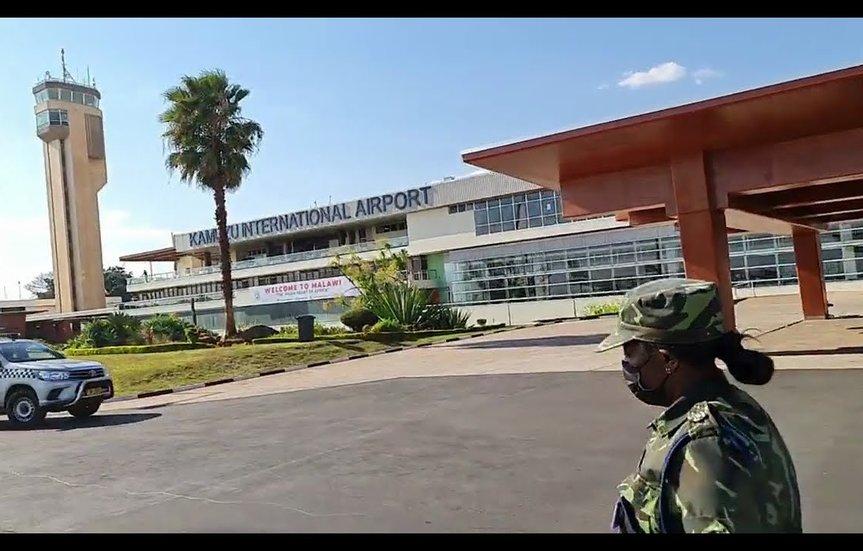




Telecommunications
Malawi Telecommunications Limited (MTL) is a major player in Malawi's telecommunications sector, offering fixed-line telephone and broadband internet services, including ADSL, fixed-wireless, and fiber-optic options, primarily in urban areas. Established in 2000 following the breakup of the Malawi Posts and Telecommunications Corporation (MPTC), MTL was privatized in 2005 to enhance service delivery, expand access, and attract investment. The company is currently owned by Telecomm Holdings Limited (80%) and the Malawi Government (20%). MTL also owns a national fiber-optic backbone, which was transferred to a separate entity, Open Connect Limited (OCL), in 2016. Additionally, MTL holds significant stakes in other key telecommunications companies, including a 44.44% share in Telekom Networks Malawi (TNM), a leading mobile operator, and a 36% share in Malawi Net, one of the country’s pioneer internet service providers. Through its infrastructure, services, and strategic investments, MTL continues to play a vital role in the growth and development of Malawi’s telecommunications industry.
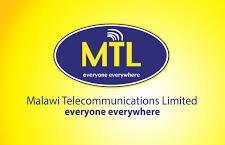
Latest News in Malawi
Politics
The first president of independent Namibia, Sam Nujoma, has died at the age of 95 in the capital Windhoek, the country's current leader has announced.
Politics
Ugandan President Yoweri Museveni has officially announced his intention to seek re-election in the 2026 presidential race, extending his nearly four-decade rule. Museveni, who has been in power since 1986, is once again positioning himself as the steady hand guiding Uganda through challenges. His decision has sparked mixed reactions, with supporters praising his leadership and longevity, while critics call for fresh leadership and political reform. As the nation looks ahead to the 2026 elections, Uganda braces for a heated political contest.
Politics
Peace Agreement with DRC Rwanda and the Democratic Republic of Congo (DRC) signed a U.S.-brokered peace deal aimed at ending conflict and promoting regional trade. Rwanda agreed to stop supporting armed groups like M23 rebels, though it denies involvement. Tensions remain, and President Kagame is cautious about whether the peace will last.
Wildlife
Tanzania has announced that all foreign tourists visiting Mainland Tanzania will be required to purchase a mandatory travel insurance policy upon arrival, beginning January 2026. The new regulation, issued by the Ministry of Finance on July 4, 2025, is part of the government reforms in the country’s 2025/26 financial year agenda. According to the notice, the measure will apply to all non-citizens, with the exception of visitors from countries that are part of the East African Community (EAC) and the Southern African Development Community (SADC). Citizens from these regions will continue to be exempt from the requirement.
Environment
In light of the growing food insecurity crisis across many African nations, heads of state and agriculture experts gathered in Nairobi, Kenya, this week to discuss solutions to address food shortages, especially in regions severely affected by climate change, political instability, and economic challenges. The two-day summit, titled “Agriculture and Climate Resilience: A Pan-African Strategy”, brought together government officials, NGOs, scientists, and international organizations to create a comprehensive strategy to improve agriculture, nutrition, and sustainable food systems across the continent.
Tech & Science
In 2025, Artificial Intelligence (AI) isn’t just a futuristic buzzword - it’s the secret weapon behind some of the world’s most successful content creators. From bloggers and YouTubers to podcasters and marketers, AI-powered tools are changing the way we brainstorm, write, design, and edit. If you've ever struggled with writer’s block, lacked design skills, or wished for faster content creation - AI might be your best assistant yet. Here’s how AI is revolutionizing the creative industry and how you can use it to boost your projects.
